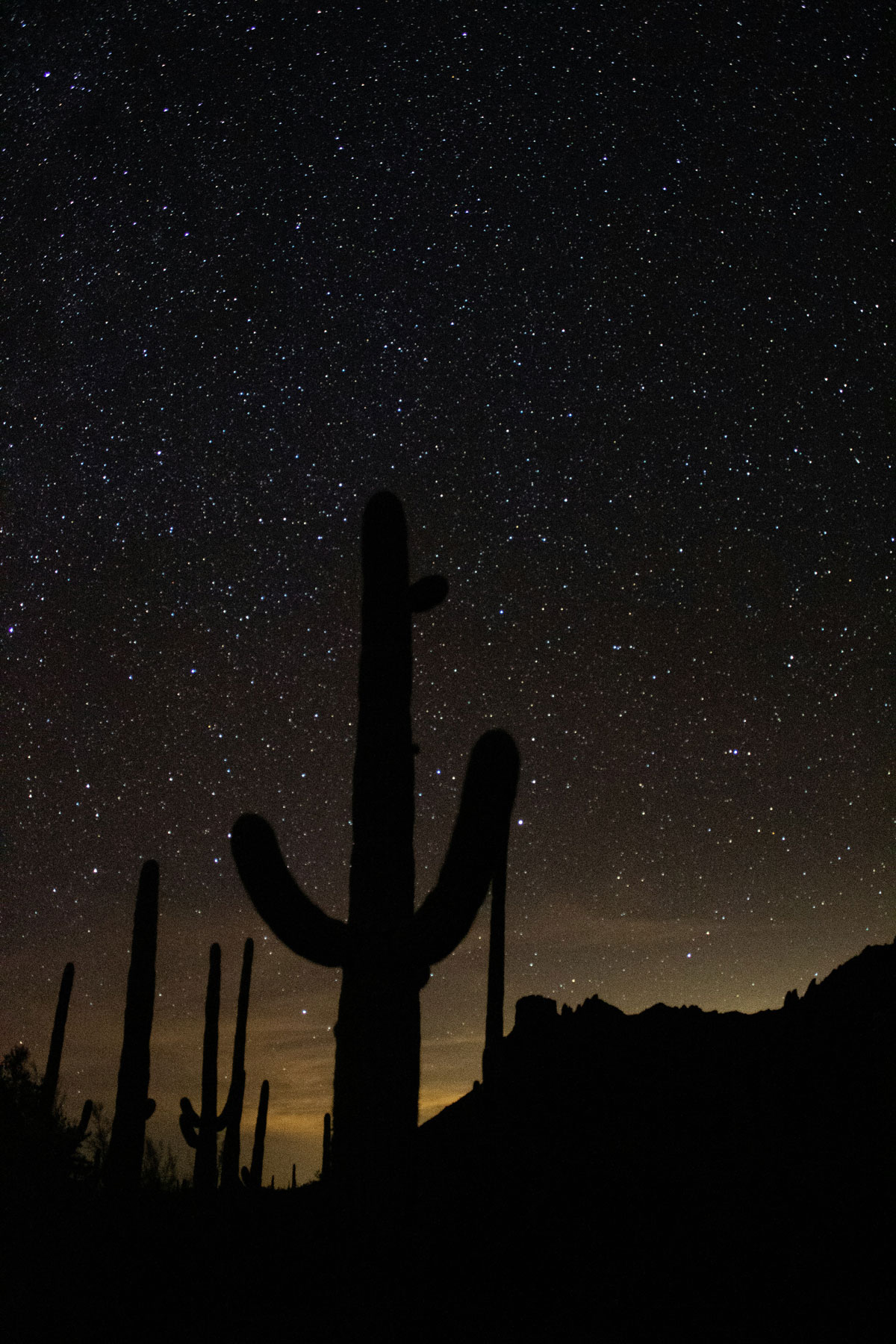When night falls in the wide-open spaces of Arizona, the sky becomes a spectacle—millions of stars spilling across the horizon in a show of cosmic wonder. But that breathtaking view is under threat. Light pollution is on the rise, even in rural areas, making it harder to see the stars and disrupting ecosystems that rely on natural darkness.
As part of Pattern’s commitment to protecting the environment, we’re working with the Southern Arizona chapter of DarkSky International to support their efforts to restore and preserve natural nighttime environments. Through this partnership, they are building out a network of tracking equipment to help log the fluctuations in light pollution in the area.

Founded by a group of astronomers, environmentalists, and concerned community members, the Southern Arizona chapter works to protect the night sky through education, advocacy, and local partnerships. They advise city planners on outdoor lighting ordinances, help businesses adopt dark-sky friendly fixtures, and host community events to raise awareness—like star parties, where telescopes and experts bring the night sky closer than ever.
For Emilio Falco, who helped found the chapter after decades of living and working as an astronomer in rural Arizona, preserving dark skies is not only important from an astronomy standpoint—maintaining dark skies protects wildlife, supports human health, and conserves energy. Many desert species, from bats to coyotes to insects, rely on the cover of night to hunt, pollinate, and navigate. Artificial light at night confuses these patterns. Even small increases in light can throw natural rhythms out of balance, both in specific biospheres like the ones in Southern Arizona, and on a global scale.
“Light pollution can disrupt the circadian rhythms of all life, as we’ve seen. We’re in what is called the insect apocalypse now,” says Emilio. “For example, lightning bugs and many other insects are dying out, and everything else depends on insects. And birds—birds are deeply impacted by light pollution.”
Emilio’s chapter co-founder, John Barentine, a long-term light pollution researcher, agrees that light pollution has a much larger impact than the organization’s name lets on. “Light pollution is the biggest environmental problem that no one has heard of. That’s mainly because people don’t see its effects. They’re not out at night, so it’s a bit out of sight, out of mind. But every day needs a night. The night is half of the 24 hour day, roughly, and it is a place that nature dwells for half of that day,” John says. “I think it’s a real loss, not just for the natural world, but also for the human environment.”
Despite the light pollution in the area, Arizona is still home to some of the darkest skies in the country, including several certified Dark Sky Cities, which include smaller towns like Tubac, Arizona, where Emilio lives, but also includes Flagstaff, a major metropolis in the state. We all have a role to play to maintain dark skies, from homeowners changing their porch lights to municipalities rethinking their infrastructure.
“People are often surprised to learn that shielding a streetlight or switching a bulb can have a big impact,” says John. “It’s about using the right light, in the right place, at the right time.” You can learn more in the Southern Arizona chapter of DarkSky International’s Five Principles for Responsible Outdoor Lighting.
For the Southern Arizona chapter of DarkSky International, the goal isn’t to turn off the lights but rather to light responsibly so that the stars can still shine through. That’s the driving concept behind their forthcoming DarkSky Network—a light pollution tracking system which Emilio developed a sophisticated mapping system for, and which requires specialized equipment to fully put into place.
Because Pattern believes in the important work of protecting the night skies, we made a donation which allowed the Southern Arizona chapter of DarkSky International to buy the equipment needed to get the DarkSky Network off the ground.
“We just started the project, and we’re deploying the units that Pattern has financed for us,” says Emilio. “So we’re very appreciative of that.”
“For me, what the Dark Sky Network really does for us is increase our credibility by providing factual basis for our claims,” says John. “You can’t really articulate the nature of a problem until you understand it, and to understand it, you have to have some kind of measurement or data that tells you the state of things.”
Adding to the impact of the Dark Sky Network is the fact that it’s free and easy for anyone to access, from advocates and scientists like John and Emilio to the general public. The idea behind the project is to gather data about where and why light pollution is worsening in Southern Arizona, so that dark sky advocates don’t have to rely solely on anecdotal observations.
So what can the average person do to mitigate light pollution while the new Dark Sky Network collects data? “People can just generally get educated about the issues,” says John. “The Darksky International website is a trove of information that’s all freely available. Just being aware of light pollution is half of the weight of the solution.”
To learn more about the Southern Arizona chapter of DarkSky International and how you can support their work, please visit their website.